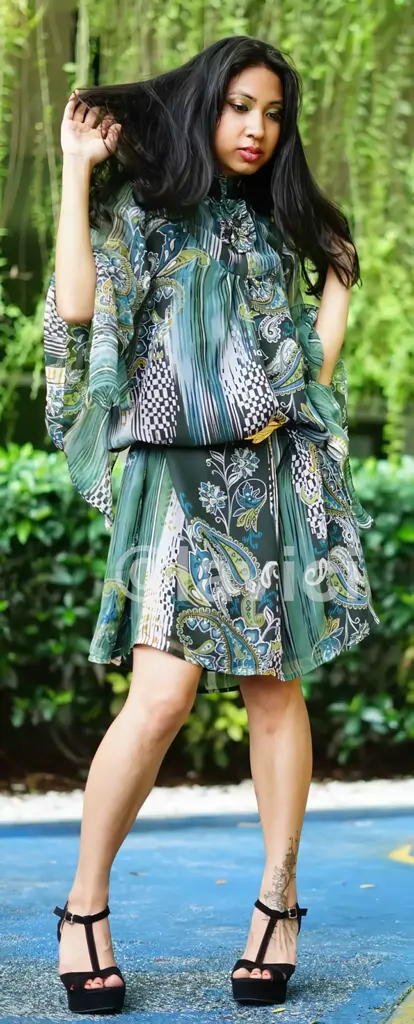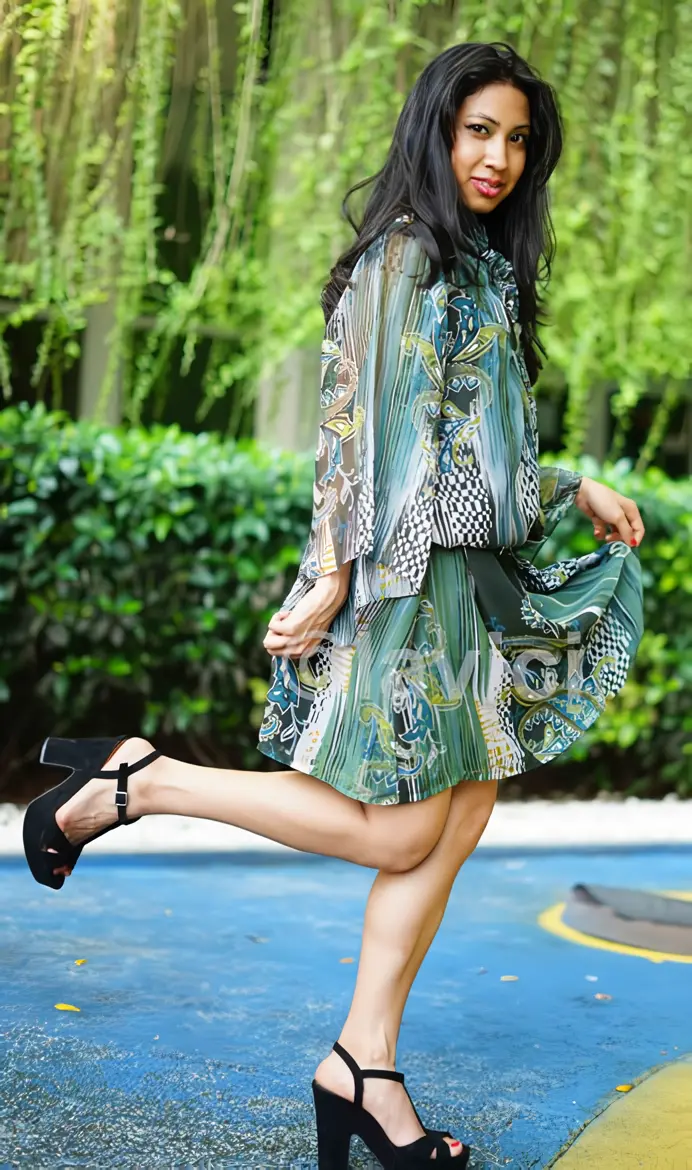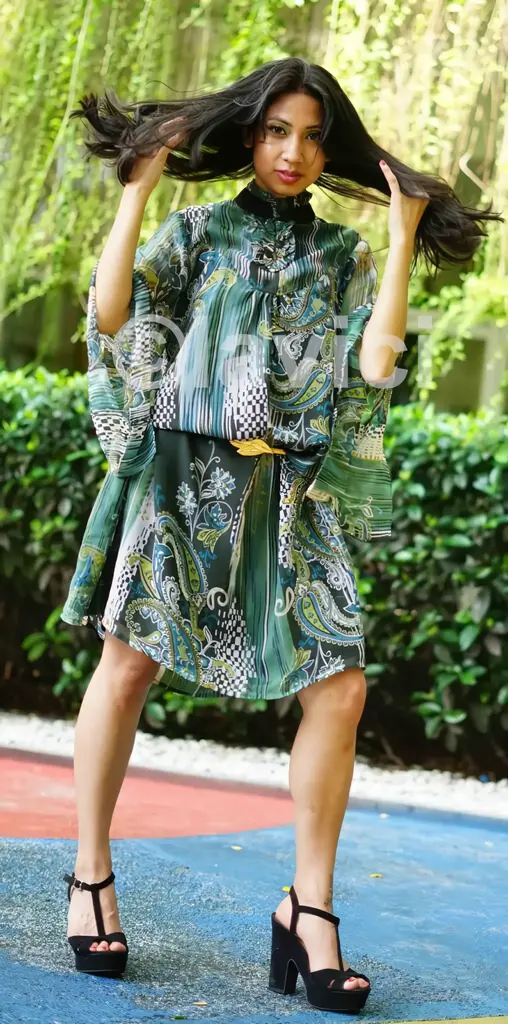
Batik, a revered Indonesian textile, is a testament to the nation’s rich cultural heritage. This intricate art form involves a meticulous process of wax-resist dyeing, where patterns are created by applying molten wax to fabric before immersing it in dye. The wax resists the dye, leaving behind intricate designs that are both visually stunning and culturally significant.
A Journey Through Time
The origins of batik can be traced back to ancient Javanese and Indonesian cultures. Historical records and archaeological findings provide evidence of the significance of batik in royal courts and aristocratic circles. The intricate patterns and symbolic meanings embedded within batik designs often reflected the wearer’s social status, wealth, and cultural affiliation.
The Evolution of Batik
Over the centuries, batik has evolved, adapting to changing times and fashion trends. Traditional batik, characterized by its intricate hand-painted designs, remains highly valued. However, contemporary batik artists have embraced innovation, incorporating modern techniques and materials into their creations.
The Global Appeal of Batik
Batik’s unique aesthetic and cultural significance have captivated the world. Renowned fashion designers have incorporated batik into their collections, showcasing its versatility and timeless appeal. From bold, geometric patterns to delicate floral motifs, batik offers a diverse range of styles to suit various tastes.

The Enduring Legacy of Batik
As a cultural symbol of Indonesia, batik continues to inspire and amaze. Its enduring legacy is a testament to the creativity and ingenuity of Indonesian artisans. By preserving and promoting this art form, we can ensure that batik remains a vibrant and cherished part of Indonesia’s cultural heritage.

A Step-by-Step Guide to Creating Batik
- Prior to commencing the dyeing process, it is imperative to pre-wash the fabric in hot water with a specialized detergent, such as Synthrapol. This step is crucial to eliminate any chemical residues or impurities that may interfere with the dyeing process, ensuring optimal color absorption and vibrancy.
- To establish a foundation for the subsequent layers of color, it is necessary to initially dye the fabric in base colors. These base colors will serve as the underlying hues that will be revealed through the intricate patterns created by the wax resist technique.
- To prepare the wax for application, it is essential to melt it using a suitable heating method. Batik wax, often available in solid block form, should be melted in either an electric wax pot or a double boiler. It is crucial to exercise caution when handling hot wax, as it can pose a risk of burns and fires if overheated. To prevent accidents, avoid heating the wax directly on a stovetop. Instead, utilize a wax pot or double boiler, which provides a controlled and safer heating process.
- To ensure optimal precision and control during the wax application process, it is advisable to stretch the fabric tautly on an embroidery hoop. This technique will prevent the fabric from shifting or wrinkling, thereby facilitating the creation of intricate designs. For larger areas of fabric, a protective surface such as newsprint or cardboard can be placed beneath the fabric to safeguard the work surface from wax penetration.
- To commence the intricate process of wax application, a variety of tools can be employed, each yielding distinct line qualities and design possibilities. Experimentation with these tools is highly recommended to achieve desired effects.A single-spouted tjanting tool, a versatile instrument, is ideal for drawing thin lines and detailed designs. It comes in various sizes, allowing for precise control over the application of wax. For creating parallel lines or filling larger areas, a double-spouted tjanting tool is particularly effective.
Brushes can be utilized to cover broader areas of fabric. Traditional brushstrokes can be employed, or the brush can be used in a stippling technique to create a dotted pattern. To achieve uniform shapes and patterns, stamps can be employed. These stamps can be crafted from various materials, such as carved potatoes or celery stalks, that can withstand the heat of the molten wax.
- To ensure optimal results, it is crucial to maintain the wax at the appropriate temperature. The wax should be sufficiently hot to penetrate the fabric fibers without becoming overly thin and spreading uncontrollably. A clear indication of successful wax penetration is the visibility of the wax on the opposite side of the fabric.
Preparing for the Dyeing Process
Before immersing the fabric in the dye bath, it is prudent to begin with lighter colors, such as green, and gradually progress to darker hues. This sequential approach ensures optimal color saturation and prevents unintended color mixing.
The Dyeing Process:
- Pre-Treatment: Prior to dyeing, the fabric should be thoroughly washed with a suitable detergent, such as Synthrapol, to remove any impurities or sizing agents that may hinder the dyeing process.
- Dye Preparation: Dissolve the desired dye in water according to the manufacturer’s instructions. Note that certain dyes, particularly reds, may require more effort to dissolve completely.
- Salt Addition: Incorporate the appropriate amount of non-iodized salt into the dye bath. A general guideline is to use 1.5 cups of salt for every half pound of dry fabric and 3 cups of salt for every pound of fabric.
- Fabric Immersion: Gently immerse the damp fabric into the dye bath and stir frequently for approximately 20 minutes.
- Mordanting with Soda Ash: To enhance colorfastness, soda ash, or sodium carbonate, is added to the dye bath. Dissolve the soda ash in warm water and gradually introduce it into the dye bath over 15 minutes, avoiding direct contact with the fabric to prevent discoloration. Use approximately 1/6 cup of soda ash for every half pound of dry fabric and 1/3 cup for every pound of fabric. Continue to stir gently for an additional 30 minutes.
- Rinsing and Washing: After the dyeing process, thoroughly rinse the fabric with cool water until the water runs clear. Subsequently, wash the fabric in hot water using Synthrapol to remove any excess dye. For darker colors, multiple washings may be necessary to achieve optimal colorfastness. Allow the fabric to air dry completely.
- To create intricate and layered designs, additional applications of wax can be applied to the fabric. Each subsequent layer of wax will resist the next dye color, allowing for the creation of complex patterns. When adding multiple layers of color, it is advisable to begin with lighter hues and gradually progress to darker shades. This approach ensures optimal color saturation and prevents unintended color mixing.
- Removing the Wax Resist
Once the desired color scheme has been achieved, the wax resist can be removed through one of two methods:
- Boiling Method:
- Fill a large pot with water and add a few drops of Synthrapol detergent.
- Bring the water to a boil.
- Gently place the fabric into the boiling water, ensuring it is fully submerged.
- Weigh down the fabric with a heavy object to prevent the wax from reattaching to the fabric.
- Allow the fabric to boil for several minutes until the wax has completely melted and risen to the surface.
- Once the wax has been removed, allow the pot to cool completely.
- Carefully peel off the solidified wax layer from the surface of the water.
- Ironing Method:
- Place the fabric between two sheets of absorbent paper.
- Gently iron the fabric, applying moderate pressure.
- The heat from the iron will melt the wax, causing it to be absorbed by the paper.
Periodically replace the paper sheets to ensure effective wax removal.
It is important to note that the ironing method may leave behind a slight residue of wax. To remove any remaining residue, the fabric can be washed with a mild detergent and hot water.
- Boiling Method:
Final Steps: Washing and Drying
To complete the batik-making process, a final washing is necessary to remove any residual dye or wax. Use a mild detergent, such as Synthrapol, to thoroughly cleanse the fabric. After washing, the fabric can be dried either by hanging it on a drying line or using a dryer. Once completely dry, the batik is ready to be admired and cherished.




